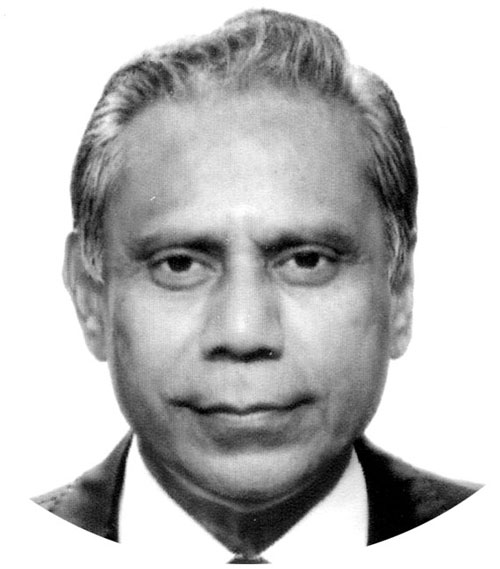72 years since the founding of PRC
ON 01 October 1949, Mao Zedong, the General Secretary of the Communist Party of China (CPC) declared the independence of modern China, named the People’s Republic of China (PRC).
From the very outset, the nascent state was beset with problems. Having faced a century of humiliation, struggling against Japanese imperialism and decades of struggle against Chiang Kai Shek’s Chinese Nationalist Party, commonly known as Kuomintang, had taken a huge toll.
The Kuomintang had been driven out of the mainland but took refuge in Taiwan, where they established the Republic of China (ROC). While retreating, the Kuomintang had ravaged China, emptying its coffers.
To add salt to the wound, the Occident, wary of the rise of Communism, decided to ignore the 543 million Chinese inhabiting PRC and instead recognised the tiny island of Taiwan representing the Republic of China as a sovereign state and even granted it permanent membership of the UN Security Council.
The biggest task ahead of Chairman Mao was feeding the teeming millions, helping the war weary Chinese to stand on their own feet. No international support was forthcoming.
Besides the Soviet Union, Pakistan was one of the main countries that had not only recognized PRC, established diplomatic ties but also served as a window for China to the outside world.
For twenty-five years, Pakistan not only raised its voice to get PRC recognition by the West but also provided technology and other support denied the Chinese by the West.
2021 is also the fiftieth anniversary of the clandestine visit of US National Security Advisor (later Secretary of State) Henry Kissinger to Beijing.
Despite the fact that Pakistan was embroiled in a war against insurgency in its eastern wing, Islamabad organized the top-secret visit.
A special PIA flight took Mr. Kissinger and a handful of Chinese diplomats and translators to Beijing, where he met Premier Zhou Enlai and Chairman Mao Zedong.
Thus, the foundations for US President Richard Nixon’s visit to China were laid, which was a precursor to the PRC’s recognition and the restoration of its permanent seat in the UN Security Council.
Chinese leadership has never forgotten Pakistan’s support in those bleak years or the helping hand extended whenever China faced a natural calamity or catastrophe.
That is the reason, China and Pakistan are “Iron Brothers” and have the most steadfast strategic partnership.
The opening up of PRC by Deng Xiaoping and his revolutionary economic reforms propelled China from an underdeveloped country into an economic giant.
Stability and consistency in policies by the CPC and revisiting the reforms by subsequent leaderships to look inwards, carry out a critical analysis and execute course correction, has ensured that PRC maintains a high rate of growth.
2021 is also the centenary of the foundation of CPC, when its first centennial goal—the eradication of absolute poverty from China has been realized.
This scribe started visiting China in 1974 and is an eye witness to its development and progress.
It is no mean achievement since during my scores of tours all over China, even to the rural areas, I have found visible evidence of the gradual uplift of the once abject poverty.
The meteoric economic rise of the eastern provinces had left a gap between them and the less opulent western region as well as between the rapidly growing urban community and the countryside.
The disparity between the western and eastern regions has mostly been bridged through sharing of resources, the Belt and Road Initiative (BRI) added impetus to the process but the uplift of the rural community necessitated greater effort.
Western sources claim that Beijing poured almost $700 billion in loans and grants into poverty alleviation over the past five years — about 1 per cent of each year’s economic output.
That excludes large donations by state-owned enterprises like State Grid, a power transmission giant, which put $120 billion into rural electricity upgrades and assigned more than 7,000 employees to work on poverty alleviation projects.
If the Chinese economy can sustain this kind of apportionment of funds and resources to achieve a noble task as poverty alleviation, who are we to grudge it.
Reports indicate that the Chinese government offered free cattle and funds to farmers in remote mountain communities, which have now multiplied, enabling the dwellers to lead a better life.
Roads have been paved and lit with solar panels, subsidies granted to create jobs and build better housing while officials visit residents weekly to check on their progress.
The campaign took on new urgency in 2020 as the country bore the brunt of the coronavirus pandemic.
Amidst adversity was opportunity. Facilities were established all over, including the rural region to manufacture medical supplies especially simpler items like face masks and bodysuits to avert the pandemic not only in China but the world over.
Organizations that employed people who were existing below the poverty line, were provided subsidies as incentive while relatively lower income workers were given bonuses for their effort.
Resultantly, 700 million people have not just been lifted out of poverty, but to a standard of living where their offspring are admitted to institutions of higher learning and they themselves reside in decent living conditions, with civic amenities and a higher quality of life.
The accomplishments of PRC in science, technology, defence production, space travel, medical research is remarkable.
The bold handling of the global pandemic in keeping the number of casualties to a bare minimum, developing a potent anti-COVID-19 vaccine and sharing its expertise with the world as well as distributing the vaccine to less developed countries is an extraordinary feat. Well done China.
—The writer is retired PAF Group Captain and a TV talk show host.










